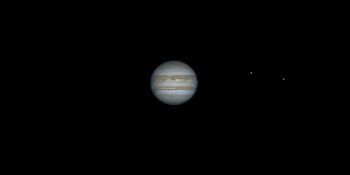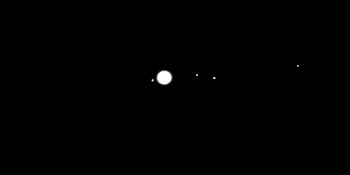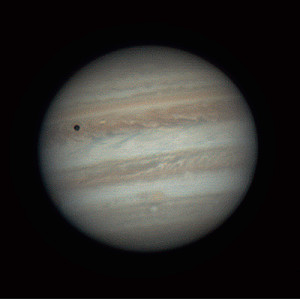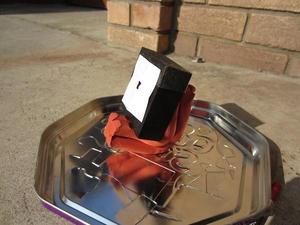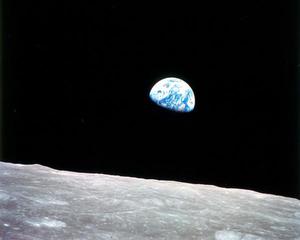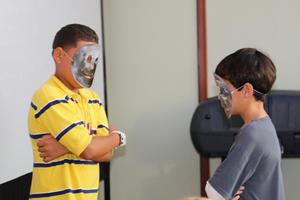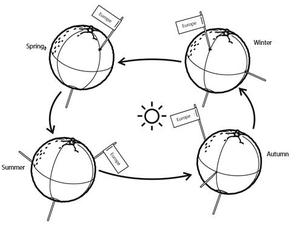Termine del Glossario Orbita
Descrizione Un'orbita è il percorso di un oggetto in movimento in un sistema attorno al centro di massa di quel sistema, causato dalla forza gravitazionale reciproca tra gli oggetti del sistema. Per sistemi come il Sistema Solare, in cui il corpo centrale è molto più massiccio degli altri corpi, questo centro di massa si trova all'interno o vicino all'oggetto più massiccio (nel caso del Sistema Solare, il Sole). In un sistema stellare binario, il centro di massa delle stelle orbitanti si trova spesso tra le due stelle.
Le orbite sono in genere di forma ellittica, e il centro di massa del sistema é situato su un fuoco dell'ellisse. Le dimensioni e la forma dell'orbita sono definite dal semiasse maggiore e dall'eccentricità dell'ellisse. Le orbite più eccentriche hanno ellitticità più elevate. La maggior parte dei pianeti del Sistema Solare ha eccentricità orbitali molto vicine allo zero, ad esempio Venere (0,007) e la Terra (0,017), tranne Mercurio (0,206) e il pianeta nano Plutone (0,244).
Termini correlati
Vedi questo termine in altre lingue
status del termine e della definizione La definizione originale di questo termine in inglese é stata approvata da un ricercatore astronomo e da un docente La traduzione di questo termine e della sua definizione sono state approvate da un ricercatore astronomo e da un docente
Il Glossario Multilingue OAE é un progetto dell'Ufficio IAU per la didatticadell'astronomia (OAE) in collaborazione con l'ufficio IAU OAO per la DivulgazioneAstronomica (OAO). I termini e le definizioni sono stater scelte, scritte eriviste da un impegno collettivo da parte di OAE, i Centri e i Nodi OAE e iCoordinatori Nazionali per la Didattica dell'Astronomia e da altri volontari.Potete trovare una lista completa dei crediti, Tutti i termini del glossarioE le definizioni sono pubblicate su Creative Commons CC BY-4.0 licenza e dovrebbero essere accreditate ad IAU OAE.
Se noti un errore di fatto o di traduzione in questo termine del glossario, per favore contattaci.
File multimediali correlati
La rotazione di Giove, di Vishal Sharma, India
Crediti: Vishal Sharma/IAU OAE
License: CC-BY-4.0 Creative Commons Attribuzione 4.0 Internazionale (CC BY 4.0) icone
Le Lune di Giove Movie2, di Nicolas Hurez, Paul-Antoine Matrangolo, e Carl Pennypacker, Stati Uniti d'America
Crediti: Nicolas Hurez, Paul-Antoine Matrangolo and Carl Pennypacker/IAU OAE
License: CC-BY-4.0 Creative Commons Attribuzione 4.0 Internazionale (CC BY 4.0) icone
Giove, Io e la sua ombra, di Ralf Burkart, Ge
Crediti: Ralf Burkart/IAU OAE
License: CC-BY-4.0 Creative Commons Attribuzione 4.0 Internazionale (CC BY 4.0) icone
L'orbita di beta Pictoris b
Crediti: Consorzio ESO/Lagrange/SPHERE link ai crediti
License: CC-BY-4.0 Creative Commons Attribuzione 4.0 Internazionale (CC BY 4.0) icone
Attività correlate
Measure the Solar Diameter
astroEDU educational activity (links to astroEDU website) Description: Hands-on activity to measure the Sun by using household materials.
License: CC-BY-4.0 Creative Commons Attribuzione 4.0 Internazionale (CC BY 4.0) icone
Etichette:
Hands-on
, Scales
, Observing
, Measurement
Fasce d'età
12-14
, 14-16
, 16-19
, 19+
Livello di istruzione
Middle School
Aree di apprendimento
Social Research
Costi:
Low Cost
Dimensione del Gruppo:
Group
Abilità:
Communicating information
, Constructing explanations
, Using mathematics and computational thinking
Blue Marble in Empty Space
astroEDU educational activity (links to astroEDU website) Description: Students are taken on a virtual journey to outer space to experience that we live on a tiny planet that floats in a vast and empty space.
License: CC-BY-4.0 Creative Commons Attribuzione 4.0 Internazionale (CC BY 4.0) icone
Etichette:
Life
, Hands-on
, Model
, Scales
, Distances
, ISS
Fasce d'età
6-8
, 8-10
Livello di istruzione
Primary
, Secondary
Aree di apprendimento
Interactive Lecture
, Modelling
Costi:
Low Cost
Durata:
30 mins
Dimensione del Gruppo:
Group
Abilità:
Asking questions
, Communicating information
, Developing and using models
Lunar Day
astroEDU educational activity (links to astroEDU website) Description: Through a fun-learning activity, understand why moon always keeps the same face towards Earth.
License: CC-BY-4.0 Creative Commons Attribuzione 4.0 Internazionale (CC BY 4.0) icone
Etichette:
Lunar day
Fasce d'età
4-6
, 6-8
Livello di istruzione
Primary
, Secondary
Aree di apprendimento
Modelling
, Structured-inquiry learning
Costi:
Free
Durata:
30 mins
Dimensione del Gruppo:
Group
Abilità:
Analysing and interpreting data
, Asking questions
, Communicating information
, Constructing explanations
, Developing and using models
Day and Night in the World
astroEDU educational activity (links to astroEDU website) Description: Compare diurnal and nocturnal animals and experiment with day and night.
License: CC-BY-4.0 Creative Commons Attribuzione 4.0 Internazionale (CC BY 4.0) icone
Etichette:
Life
, Model
, Animals
, Day and night
Fasce d'età
6-8
, 8-10
Livello di istruzione
Primary
Aree di apprendimento
Interactive Lecture
, Modelling
, Social Research
Costi:
Low Cost
Durata:
1 hour
Dimensione del Gruppo:
Group
Abilità:
Asking questions
, Constructing explanations
, Developing and using models
, Planning and carrying out investigations
Seasons Around the World
astroEDU educational activity (links to astroEDU website) Description: Demonstrate the seasons on Earth using a model.
License: CC-BY-4.0 Creative Commons Attribuzione 4.0 Internazionale (CC BY 4.0) icone
Etichette:
Hands-on
, Model
Fasce d'età
6-8
, 8-10
, 10-12
Livello di istruzione
Middle School
, Primary
Aree di apprendimento
Modelling
, Social Research
Costi:
Medium Cost
Durata:
45 mins
Dimensione del Gruppo:
Group
Abilità:
Analysing and interpreting data
, Asking questions
, Constructing explanations
, Developing and using models
, Planning and carrying out investigations
